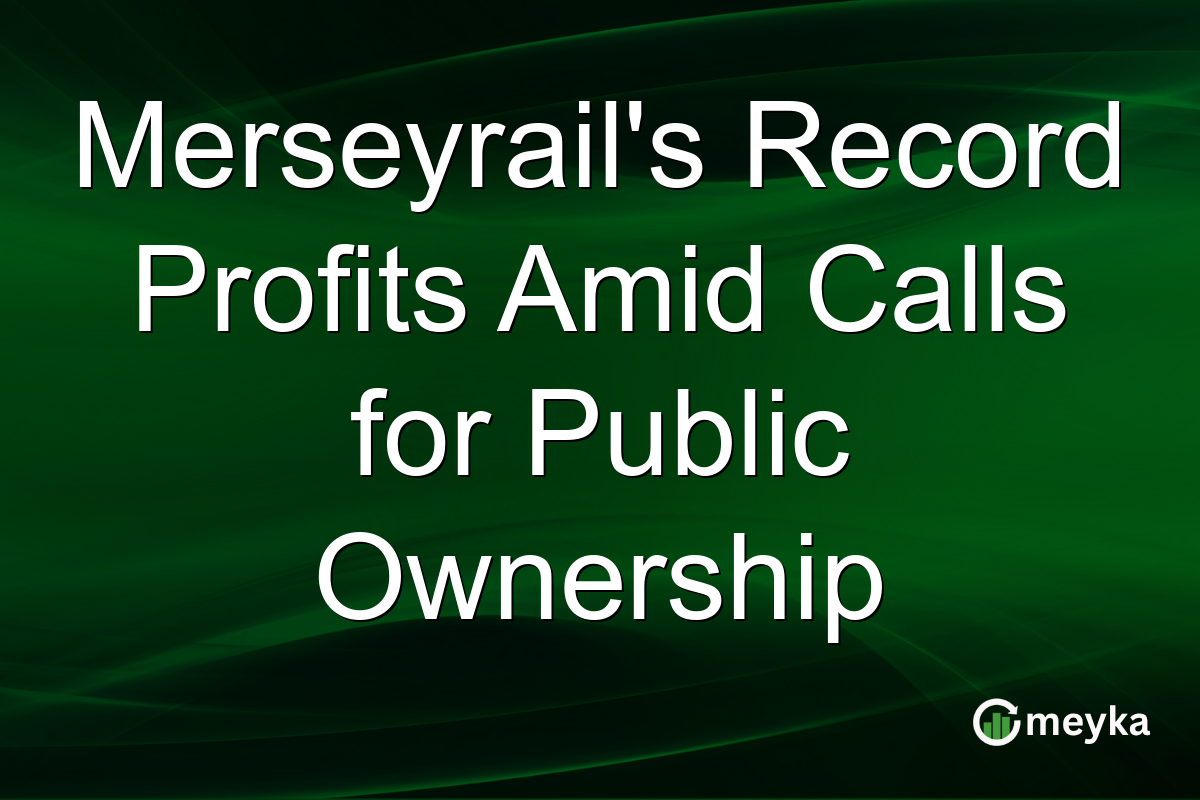Merseyrail’s Record Profits Amid Calls for Public Ownership
Merseyrail, the commuter rail network serving Liverpool and its surrounding areas, has recently hit record profits. This success prompts a significant conversation about the future of railway management in the UK. With ongoing debates about public ownership of railways gaining traction, Merseyrail’s financial achievements take on new importance. Let’s delve into the factors contributing to these profits and the implications for public ownership of rail systems.
Merseyrail’s Record-Setting Financial Success
Merseyrail reported record profits this year, exceeding previous quarters and creating a buzz in both the transportation and financial sectors. According to recent data, the company’s annual revenue reached approximately £150 million, marking a notable increase from last year. The operating profit surged by 20%, illustrating robust growth driven by increased passenger numbers and cost efficiencies. Several factors contributed to this financial upswing. A rise in commuter numbers following pandemic restrictions eased, alongside successful operational strategies, played a significant role. Additionally, investments in modernizing infrastructure have enhanced customer experience, leading to heightened satisfaction and loyalty. The company’s partnership with local authorities to improve service delivery further solidified its financial position. It also marked the commitment of private stakeholders to maintain and boost the efficiency of operations, demonstrating a successful privatization model for many observers. However, these results also underscore a looming question: should public resources ensure all reap the benefits?
The Public Ownership Debate
With Merseyrail’s financial performance shining a light on the benefits of privatization, discussions around public ownership have resurfaced. Supporters of public ownership argue for a government-managed rail system, citing potential improvements in affordability and accessibility. They suggest that rail networks, as essential public utilities, should prioritize public good over profit. Critics, however, point to the efficiency and profitability achieved under privatized management. According to a recent report, public ownership could entail higher taxpayer burdens and potential politicization of management decisions. The broader debate around railway privatization in the UK involves balancing cost-effective service delivery with public welfare. Ultimately, whether Merseyrail remains a privatized entity or transitions to public ownership will shape commuter experiences and economic outputs significantly.
Privatization’s Impact on Commuters and Services
Analyzing privatization’s impact, we find it brings both benefits and challenges. Merseyrail’s private management has invested significantly in new trains and station upgrades, enhancing service quality. Recent customer surveys indicate a 90% satisfaction rate, highlighting improvements from digital ticketing to more frequent trains and better facilities. Despite these positives, the privatized model often leads to higher ticket prices. Recent studies show Merseyrail ticket prices having increased by 5% annually over the past five years, a concern for regular commuters. Critics argue that escalating costs may discourage daily travel, impacting local economies. Nonetheless, many believe privatization’s focus on profitability drives essential reinvestment into services. This debate underscores a central question for Merseyrail and others: can they provide both high-quality service and fair pricing?
Looking Forward: Balancing Profit and Public Interest
The discussion around Merseyrail’s financial success and public ownership presents an opportunity to reflect on the broader implications for railway management. Striking a balance between profitability and public service delivery is crucial. Utilizing profits to fund reinvestment while ensuring affordability can create a sustainable model. As per experts, incorporating technology can drive efficiency without escalating costs, benefiting both owners and users. Future investments in sustainability and digital innovations could further enhance the travel experience while addressing economic and environmental goals. Whether Merseyrail becomes a model for successful privatization or a candidate for public ownership, the aim should remain the same: providing reliable, efficient, and accessible rail services for all.
Final Thoughts
Merseyrail’s record profits have not only highlighted the successes of a privatized rail network but also reignited the public ownership debate. Balancing these perspectives requires a focus on sustainable practices that meet both financial and public needs. As stakeholders consider future directions, platforms like Meyka can offer valuable insights and tools for understanding complex market dynamics, aligning with the needs of both investors and the community.
FAQs
Merseyrail’s profits increased due to a rise in passenger numbers, operational efficiencies, and infrastructure investments that improved customer satisfaction.
Advocates believe public ownership could ensure affordability and prioritize public welfare over profit, potentially improving accessibility and service quality.
Privatization often improves service quality but can lead to higher ticket prices, which may affect commuter affordability and overall satisfaction with rail services.
Disclaimer:
This is for information only, not financial advice. Always do your research.






